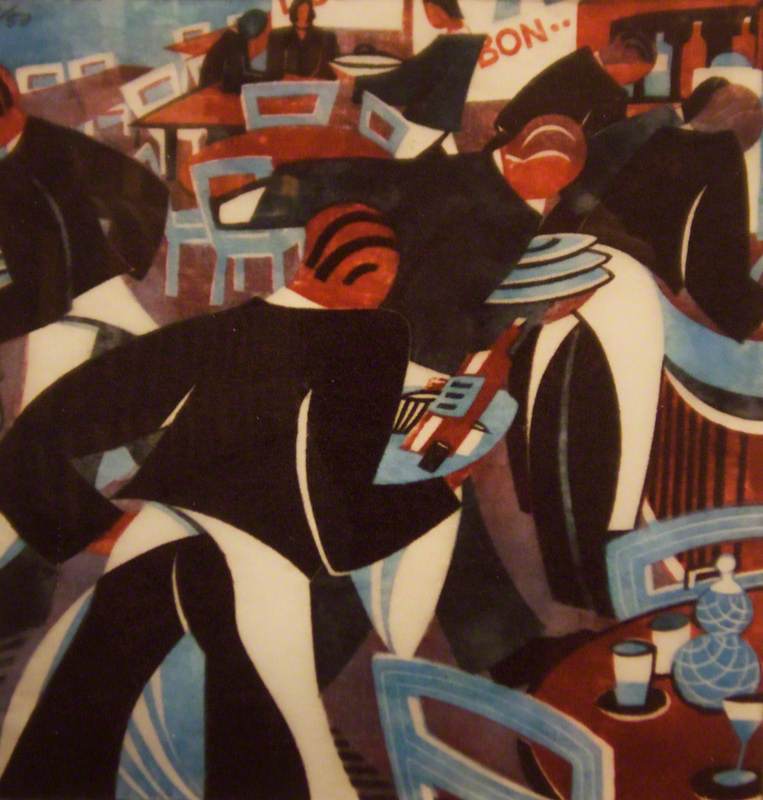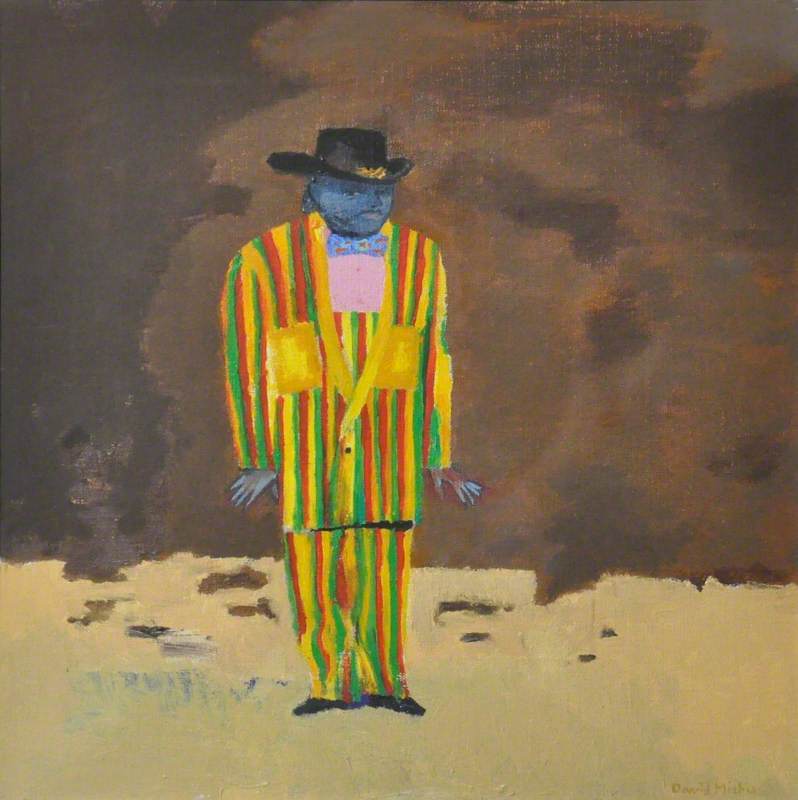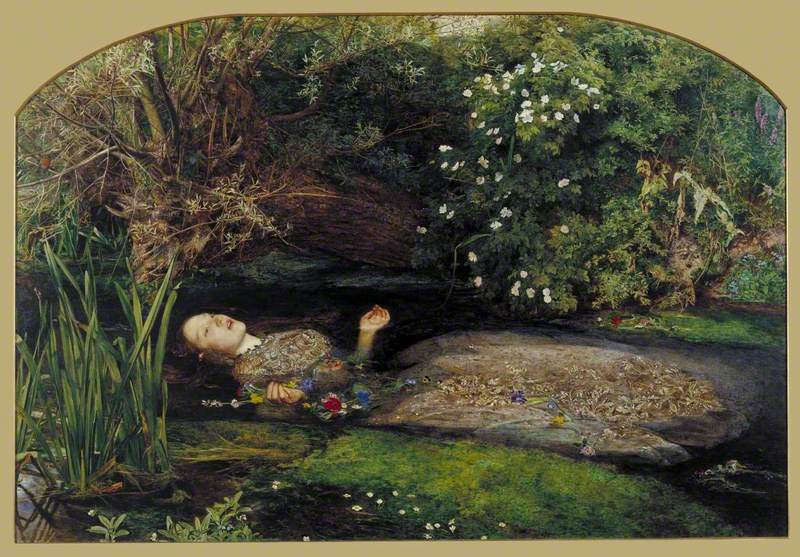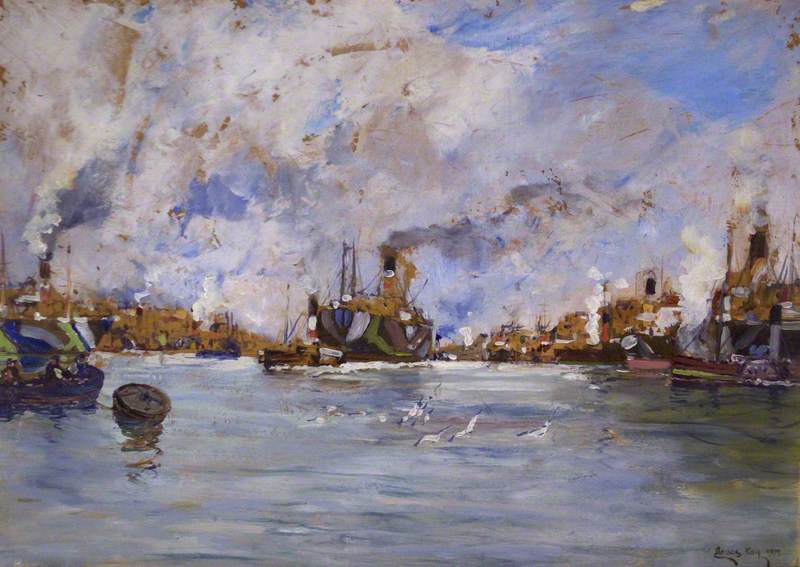Blue has one of the largest varieties of shades, definitions and tones of all colours. Blue's inherent connections to the sky and the sea, and its association with mystical powers – courtesy of its mineral origins in the rare lapis lazuli rock – engender a complex network of feelings and interpretations: blue can be at once characterful, petulant, romantic, calming, awkward and even eerie.
The colour's agility renders it a consummate companion for Surrealist art – a genre largely defined by its adherence to automatic, unbridled expression. The emotive, zany and nonsensical qualities beholden to Surrealism spread leisurely within the varying tones that blue paint offers – blue can encapsulate the many different thought patterns and feelings within a painter's mind.
The profitable connection between the colour blue and Surrealist art is well documented within The Reiff Collection.
Conroy Maddox's Surrealist Figure portrays two peculiar, fantastical figures, foregrounded amongst looming washes of blue. The figure on the left-hand side presents a dark blue appendage, possibly a cloak or a tail, which draws our gaze to the only other acutely blue area of the composition on the right side of the painting. The vapour-like swathes of dark blue loom large in the background, threatening the mood of the painting, and almost adding a sense of caution or foreshadowing.
Once our eyes attune to this blue hue, the rest of the background's blue pigments reveal themselves. These are tonally much colder than the subjects in the foreground, and Maddox draws tension out of the indiscriminate setting and its peculiar subjects. It feels like the image is cascading downwards, in clouds – possibly a nightmare or a mere daydream. Nonetheless, Maddox uses blue to propound the painting's altered state of consciousness: its Surrealist demeanour.
Lill Tshudi's Waiters 1936 is a dynamic and almost stress-inducing painting, saturated with waiter figurines who are at once human and realistic, yet indiscriminate and dreamlike. The painting, however, derives its sense of realism from its blue accents, by way of chairs, tables and waiters' uniforms. There is something about this shade of blue which conjures a traditionalism – perhaps nodding toward blue Cornishware or Delft crockery. The blue becomes a metonym for banqueting and good service. This hard-formed reality teases out a sense of tension with the more naive and abstracted parts of the painting: the proportions of the waiters, their featureless faces and their overlapping limbs. The viewer is caught between the perspectives of the waiter and the customer – the colour blue bridging the gap.
David Michie's George Melly at the Festival Theatre depicts George Melly (1926–2007), an English blues and jazz singer, critic and lecturer in Surrealist art history. Michie injects these various pursuits into Melly's very flesh and bones. Melly becomes the music, and a Surrealist muse: his face and hands are dashed in a dry tone of blue, contrasting his dazzlingly technicoloured suit. Michie balances Melly's teal vizard, his pin-striped suit, and his recognisable hat, capturing Melly's zeal for life and his deep-thinking, creative disposition.
Still Life with Chequered Jug
oil on canvas by Kenneth Rowntree (1915–1997) 
In Kenneth Rowntree's Still Life with Chequered Jug, the textural, pastel blue background adds a sense of whimsy to the painting – it is suffused with thick, swirling brushstrokes which acutely foil the minimalist, block renderings of the painting's subjects. The textural blue introduces a sense of motion and dynamism to the work, offsetting the titular stillness of the piece and introducing a chimerical quality to the work.
This specific shade of blue harkens after the sky, and this plays with boundaries within the work, suggesting that we are both inside and outside. The domestic collides with the natural; the chequered jug becomes almost anachronistic. Rowntree, here, playfully uses the colour blue to trick perspective, setting and tone, bestowing an unexpected sense of surrealism.
In each of these paintings, we see how the colour blue informs tone and genre, and particularly how it assists in depicting subjects beyond the real. Alongside its more natural tenets, blue lends itself to whimsy, melancholy and the unreal. It becomes a mouthpiece for the subconscious and the wackier ideas within an artist's mind. While traditionally blue has been associated with symbols and mythologies, it is also an inherently mood-altering colour, and so an ideal conduit for Surrealist expressions – in all their automatism and emotiveness.
Ellie Lachs, researcher, art collection manager and cataloguer, The Reiff Collection
'Modern British Blues, A Selection of Works from the Reiff Collection' is on display at Lauderdale House on Highgate Hill, London from 1st to 27th May 2024








.jpg)










